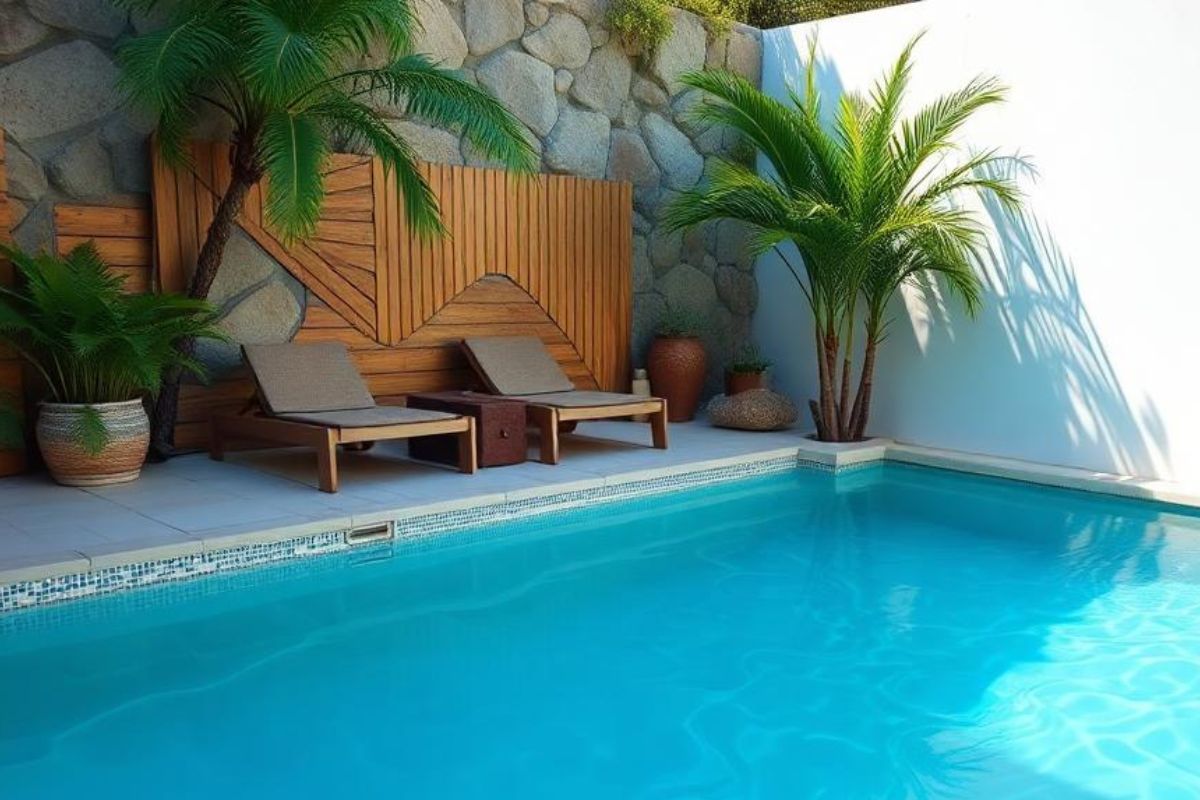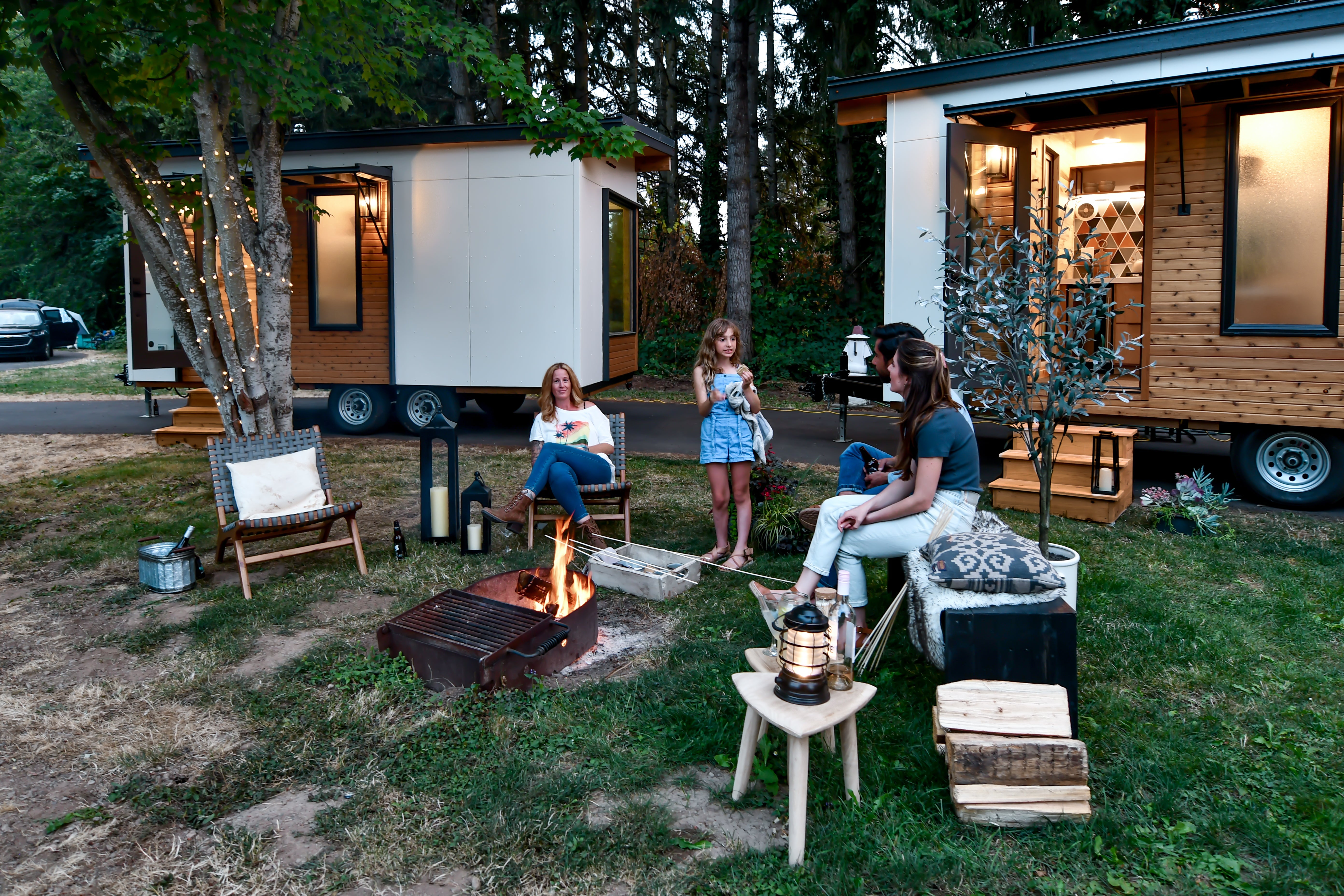More people are intentionally choosing smaller homes these days. There is less clutter, lower costs, a smaller environmental footprint, and genuine freedom from maintaining unused space. The challenge? Making 400 square feet feel spacious AND stylish.
Compact spaces don't have to be uncomfortable or feel small. The trick is finding stylish home furniture from Shop Home Styles made specifically for small spaces and using good layouts.
Think Murphy beds that vanish during the day or quality home décor pulling double duty—ottomans hiding storage, shelving backed with mirrors, and lighting fixtures doing more than one job. It's about matching clever design with furniture that justifies the space it takes up. Here's what genuinely works.
Understanding Tiny House Layouts
Smaller areas feel open, while others feel cramped, even at similar sizes. What is the difference? Sightlines, ceiling height, as well as the flow of natural light. Open layouts create visual expanse, but defined zones work equally well. Vertical space matters enormously—8-foot ceilings feel entirely different from 10-foot ones.
Three floor plan types dominate. Studio-style puts everything in one room plus a bathroom, which is brilliant for individuals but challenging for couples needing separate zones. Lofted bedrooms maximise footage by stacking sleeping above living, though you need that 10-foot height for sitting headroom. Multi-level splits create distinct zones without walls, using elevation and furniture placement.
Traffic flow determines whether layouts function or frustrate. The 3-foot pathway rule isn't arbitrary—anything narrower creates bottlenecks, especially near bathrooms and kitchens. Door swings matter more than expected. A bathroom door swinging outward can block entire hallways.
Zone without walls through strategic choices. Bookcases that are perpendicular to the wall can divide spaces. Sofas floating mid-room rather than hugging walls define areas. Raised platforms signal sleeping zones without barriers. Lighting creates boundaries—pendants over dining tables, task lighting in work corners, and ambient floor lamps for relaxation. Even rugs and colour shifts establish visual zones your brain recognises instinctively.

Pieces That Earn Their Keep
Sleeping Solutions
Murphy beds have evolved beyond clunky wall contraptions. Modern versions with gas pistons fold smoothly, often integrating shelving and desks that remain accessible when stowed. Quality matters—spring mechanisms wear out fast. Look for beds that disappear completely, reclaiming 30-40 square feet of floor space during waking hours.
Sofa beds prioritise either sofa comfort or bed comfort, rarely both. Decide which function you'll use more, then optimise for that. Storage underneath maximises inches—drawers or lift-up platforms for bedding and off-season clothes. Clean-lined designs in neutral fabrics work best in small rooms.
Loft sleeping works for younger residents who are comfortable with ladders. Still, it is genuinely unsuitable for anyone with mobility concerns. Headroom to sit up is a necessity. Heat rises, so loft bedrooms are uncomfortably hot without airflow. Small windows or fans are recommended. You can make them attractive by adding reading lights, small shelves, and soft textiles, limiting the hard surfaces.
Living & Dining Hybrid Furniture
Drop-leaf tables hug walls when not used, expanding for meals or work. Coffee tables rising to dining height serve double duty, though mechanisms need durability. Nesting tables separate for hosting, tucked together otherwise. A 36-inch round table expands to seat six, but measure first. Solid wood handles repeated adjustment better than veneer, where hinges pull loose.
Ottomans with lift-up tops store blankets while providing seating. Window benches with hinged seats capitalise on wasted space. Just don't oversize—too large defeats the purpose. Modular sectionals reconfigure as needs change, though floor cushions tucking into closets offer more flexibility in genuinely tight quarters.
Going Up When You Can't Go Out
Shelving from floor to ceiling gives you storage without eating up floor space. Those 6-inch gaps people leave at the top collect dust. Take shelves all the way up. Open shelving looks airy but needs organisation. Floating shelves handle lightweight stuff—usually 15-20 pounds max. Corner shelves use awkward spaces that regular furniture ignores.
Kitchen solutions benefit from vertical thinking. Pegboard systems organise tools whilst remaining customisable. Magnetic knife strips free drawer space. Painted wood or fabric-backed options complement various aesthetics beyond industrial metal.
Hidden storage exists in unexpected places. Stairs can become drawers, which is increasingly common in quality tiny homes. Under-stair cubbies capture substantial volume—bed platforms with built-in drawers or hydraulic lifts provide double the usefulness. Headboards incorporating shelving hold items you want near the bed anyway.

Visual Tricks That Work
Colour, Light & Scale Strategy
Light colours expand spaces, but all-white feels sterile. Strategic, deeper colours add depth—navy accent walls, charcoal lower cabinets—while keeping the upper cabinets light. Monochromatic schemes create flow. Put the darkest colours lower and on smaller items, avoiding visual weight up high.
Window treatments need privacy without blocking daylight—sheers, top-down bottom-up shades, flexible shutters. Mirror placement matters. Opposite windows, mirrors reflect light deeper. Glossy finishes increase reflectivity. Skylights bring daylight where windows can't reach.
Overhead lighting alone washes everything out. You can add lamps where you work, wall sconces for atmosphere, and strips under the kitchen cabinets. Furniture with visible legs opens up floor space visually. Skip bulky pieces hogging the room. Smaller patterns beat large florals every time. Mix smooth leather against rough jute for depth. Clear your surfaces. Only display what you genuinely treasure.
Sustainable Style on a Budget
Materials That Matter
Reclaimed wood adds character whilst helping the environment. Bamboo grows fast, making it truly renewable. Recycled metal and plastic furniture now looks identical to new. Low-VOC finishes matter more in compact spaces with limited airflow.
Cheap furniture fails faster in tiny homes—every piece gets more use per square foot proportionally. A $300 solid wood shelf outlasts three $100 particle board versions. Repairability becomes sustainability. Second-hand shopping offers quality at accessible prices.
Apartment Therapy's guide to IKEA hacks for small spaces shows how standard pieces transform through simple modifications—cutting tables, adding storage, and combining units unconventionally. Custom-built furniture fits awkward spaces perfectly. Baskets are organised while looking intentional. Plants add life and purify the air. Multi-purpose pieces earn their keep through double duty.
Making Every Space Count
Living Areas & Bedrooms
Scaled-down loveseats measuring 60 inches provide seating without dominating—wall-mounted TVs free floor space. Floating media consoles offer storage without bulk. Textiles add warmth through throws and pillows swapped seasonally.
Platform beds with integrated drawers eliminate separate dressers in tight spaces. Wall-mounted nightstands provide surfaces without floor footprints. Minimalist bedding in muted tones promotes rest while keeping visual weight low. Loft bedrooms benefit from blackout options—sleeping near ceilings catches more ambient light.
Kitchens & Bathrooms

Efficiency is key for small kitchens. Open shelving for items you need regular access to is a viable and convenient option. Magnetic strips and hanging rails capitalise on vertical space. Fold-down countertops provide temporary prep surfaces. Compact appliances maintaining performance matter more than size alone. Combination microwave-convection ovens merge two appliances.
If you don't bake weekly, skip the whole oven. Induction cooktops and toaster ovens serve actual patterns better. For coffee enthusiasts, quality espresso machines might matter more than full stoves—designed around genuine habits.
Corner sinks and toilets use space, while standard fixtures waste it. Walk-in showers beat tubs in tight bathrooms. To gain floor space, swap a 30-inch vanity for a 24-inch one. Medicine cabinets with outlets hide cords. Glass doors and large mirrors reflect light around.
Personal Touches That Don't Crowd
Display meaningful items rather than filling arbitrarily. Rotate collections seasonally. House plants add life—pothos, snake plants, and ZZ plants do well in low light. A gallery wall adds significant visual impact, and 6-9 cohesive frames usually work great. Textiles reflect personality through pillows and throws.
Your tiny house should reflect YOUR lifestyle. If you're a book collector, build floor-to-ceiling shelves rather than fighting who you are. If you don't watch TV, use that wall for something you value. Thoughtful curation means every item earns its place.
Conclusion
Planning your space carefully and designing purposefully makes tiny living work. It's not about giving things up. It's about getting clear on what you need. Good architecture paired with the right furniture happens when you know what matters to you personally.
Living in a small space is not for everyone, and that's perfectly okay. However, these techniques apply to any small space — studios, small houses, or even traditional homes where you want to live more intentionally. In housing research, those who decide to downsize generally report increased happiness and fewer feelings of overwhelm.
Measure your space first. Figure out your three main activities—design around those. You don't need to move into 200 square feet next week to use more innovative space planning.
Well-designed small spaces create room for what truly counts.





Share: